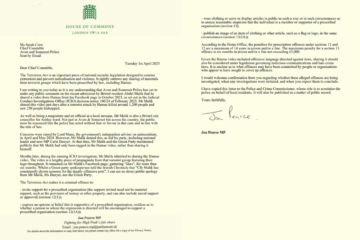Likud transport minister Yisrael Katz voiced his support again last week for a new sea port on the Gaza coast, indicating continuing Israeli concern about the future of the Palestinian enclave. The idea has been proposed in various forms over the past five years, though Katz’ vision is particularly ambitious: a $5bn artificial island three miles off Gaza’s coast, controlled by Israel and connected to Gaza by road. The island would host power and desalination plants as well as a port, providing Palestinians in Gaza with much needed electricity, water, and employment. The port’s offshore location would allow Israeli or international security to prevent weapons smuggling, and the project would be paid for by private investors and foreign donors. Katz, a hardliner, says he has “no illusions regarding Hamas and its murderous ideology”. However he says Israel’s current restrictions allows the terror group “to imprison their population without any hope of development”.
There is support for the plan across the Israeli political spectrum. Labor MK Omar Bar Lev has been a long-term backer of a Gaza port, arguing that the development should be built in exchange for demilitarisation as part of a long-term diplomatic initiative. Senior IDF officials believe that improving the humanitarian situation in Gaza is in Israel’s security interests, whilst Katz’ plan even has the backing of hard right Habayit Hayehudi Minsters Naftali Bennett and Ayelet Shaked. The plan’s two strongest opponents are former and current defence ministers Moshe Ya’alon and Avigdor Liberman, who doubt the port would be compatible with Israel’s security requirements, whilst Benjamin Netanyahu has yet to articulate a position on the issue. Both the Palestinian Authority and Hamas, however, distrust Katz’ intentions and see Israel as insincere.
The idea of a Gaza seaport has gained renewed urgency in the wake of a state comptroller report into the 2014 Gaza war released two weeks ago. Whilst much of the report focussed on Israel’s lack of preparedness and ultimate failure to deal with Hamas terror tunnels, it also criticised the fact that the Israeli cabinet were only ever presented with military options for confronting Hamas, after escalation became inevitable following the abduction and murder of three Israeli teenagers in the West Bank. Proponents of a Gaza sea port hope that a cooperative infrastructure development would establish a level of diplomatic relations between Israel and Hamas that could be used to prevent future outbreaks of violence. On a broader level, it is also hoped that lessening Gaza’s humanitarian crisis would decrease the likelihood of Hamas violence.
Nonetheless, a number of obstacles must be overcome before the port becomes reality. The plan would require the backing of the Israeli prime minister. The port plan is also yet to come unstuck from the broader quagmire of Israel-Hamas relations, where communication is only directed through back channels. Furthermore, there is the broader issue of whether Israel’s security requirements can ever be satisfied in an agreement with a group sworn to its destruction, especially given the election of an extremist as Hamas’ new leader in Gaza. Questions will also be raised over whether building the port will be a costly exercise in futility, given that Gaza’s reconstruction is grossly hindered by Hamas’ diversion of construction materials to terror tunnels and military infrastructure. Ultimately, any long-term peace in Gaza will require an economic, military, and political solution: significant infrastructure construction and development, the demilitarisation of Hamas, and Palestinian political unity.


